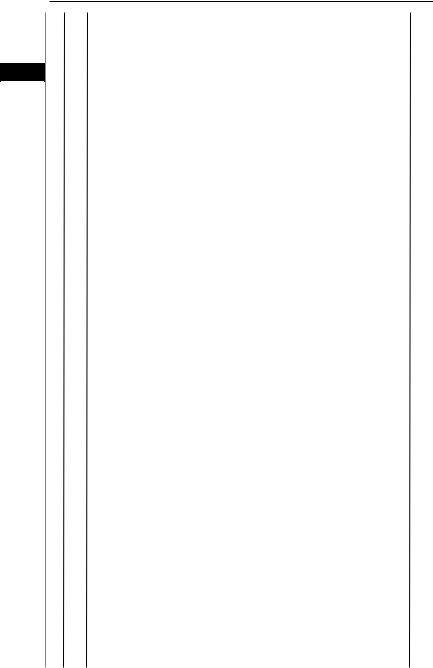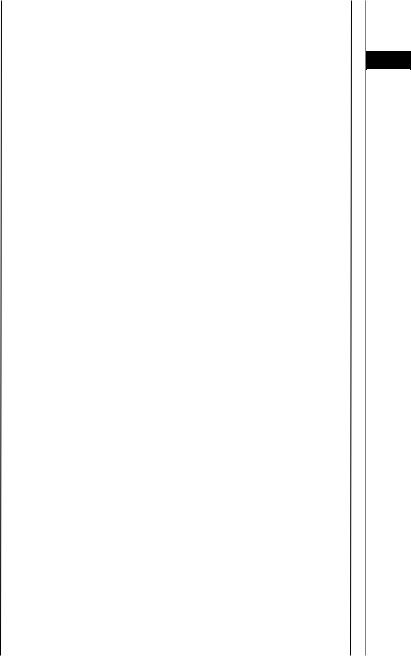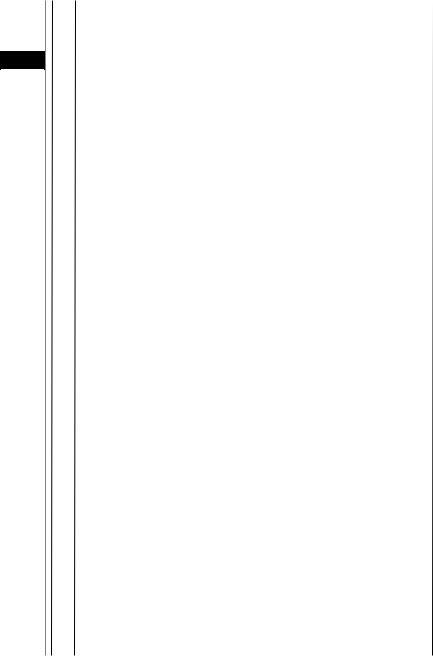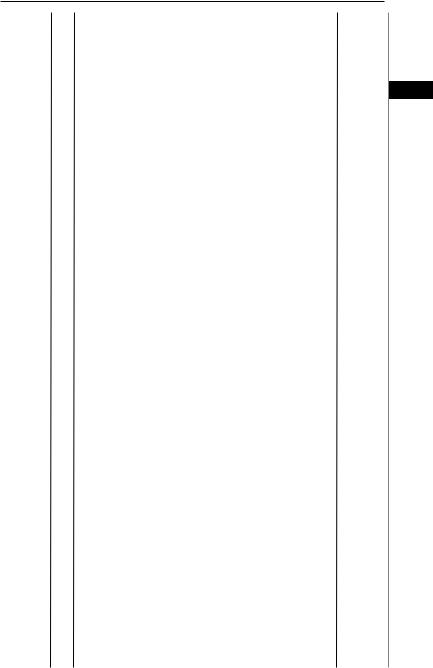
Practical Plastic Surgery
.pdf
Chapter 3
Dressings
Anandev Gurjala and Michael A. Howard
Introduction
A surgeon’s goal to achieve successful wound healing rests on two basic principles: (1) optimizing conditions for the body’s natural wound healing mechanisms to occur, and (2) minimizing the manifold detriments which interfere with this process. A few, if any methods currently exist to actually enhance wound healing, the classic tenets of “keep the wound moist, clean, free of edema and free of bacteria” are based on these two fundamentals, which in turn are rooted in basic principles of wound healing biology. Although wound healing products available today are increasingly varied and sophisticated, their primary function remains to support the intrinsic wound healing process.
Wound Healing
Wound healing occurs as an orchestrated series of four overlapping phases: coagulation (immediate), inflammation (0-7 days), proliferation (4-21 days) and remodeling (14 days-2 years). Actual physical closure of the wound occurs during the proliferative phase by granulation (fibroblasts, endothelial cells), contraction (myofibroblasts) and epithelialization (keratinocytes). An uncompromised wound will progress normally through these phases, however a compromised wound can arrest in the inflammatory or proliferative phases; resulting in delayed wound healing. If a wound is able to overcome its compromising factors and reach the remodeling phase within one month, it is termed an acute wound. If a wound is overwhelmed by its compromising factors and fails to heal within three months it is called a chronic wound.
Table 3.1 lists the factors that impair wound healing. They can be classified as intrinsic (underlying conditions that inhibit normal wound healing), extrinsic (external factors imposed on the body that inhibit wound healing) and local (factors which influence the condition of the wound bed). These impediments must be eliminated or limited in order to optimize wound healing.
Goals of Wound Dressings
The purpose of wound dressings is to control the local factors and create an environment that will optimize the wound bed for healing. The ideal dressing would achieve this goal by having the following properties:
1.Maintain a moist wound healing environment
2.Absorb exudate
3.Provide a barrier against bacteria
4.Debride—both macroscopic and microscopic material
Practical Plastic Surgery, edited by Zol B. Kryger and Mark Sisco. ©2007 Landes Bioscience.

Dressings |
13 |
|
|
|
|
Table 3.1. Factors that impair wound healing |
|
|
|
|
||||
|
|
|
|
|
||||
Intrinsic |
Extrinsic |
Local |
|
|||||
Wound: |
- |
Smoking |
- |
Desiccation |
|
|||
3 |
||||||||
- |
Hypoperfusion |
- |
Radiation |
- |
Inflammation |
|||
- |
Hypoxia |
- |
Chemotherapy |
|
Infection |
|
||
|
|
- |
Drugs (e.g. steroids) |
|
Bacterial burden |
|
||
Systemic: |
- |
Temperature (cold) |
|
Hematoma |
|
|||
- |
Age |
- |
Mechanical |
|
Foreign Body |
|
||
- |
Obesity |
- |
Pressure |
|
Ischemia |
|
||
- |
Malnutrition |
- |
Sheer |
- |
Necrotic burden |
|
||
- |
Hormones |
- |
Trauma |
|
Dead cells, exudate |
|
||
- |
Disease (e.g., diabetes, |
|
|
- |
Cellular burden |
|
||
|
cancer, uremia, EtOH) |
|
|
|
Senescent and |
|
||
- |
Venous insufficiency |
|
|
|
nonviable cells |
|
||
- |
Extremity edema (e.g., CHF) |
|
|
- |
Edema |
|
||
-Arterial insufficiency/PVD
5.Reduce edema
6.Eliminate dead space
7.Protect against further injury from trauma, pressure and sheer
8.Keep the wound warm
9.Promote skin integrity of the surrounding tissue and to do no harm to the wound
Types of Dressings
There are hundreds of commercially available wound dressings. It is beyond the scope of this chapter to cover all of them. A practical approach is to classify dressings by the material of which they are composed. The commonly used dressings are summarized in Table 3.2.
Gauze
Gauze is composed of natural or synthetic materials and may be woven (lower absorptive capacity, higher tendency to adhere to the wound bed, and high amount of lint) or nonwoven (superior absorbency, less adherence, low lint). This dressing is commonly used to cover fresh postoperative incisions. Other popular uses of gauze have remained the wet-to-dry (WTD) dressing and wet-to-moist (WTM) dressings. WTD dressings should be avoided as a method for mechanical microdebridement, since this debridement is nonselective and will harm viable tissue during dressing removal. As WTD dressings dry out, they also lead to wound desiccation, violating one of the central wound healing principles. WTM dressings—used to maintain a moist environment—are also less than ideal because they are labor intensive requiring many dressing changes, and in the process tend to dry out anyway, achieving the opposite of their intended purpose.
Other uses of gauze exist. It is indicated for wounds with exudate so heavy that other more sophisticated dressing types would not be cost-effective. Examples include drainage from a seroma or a fistula requiring many daily dressing changes. Gauze is also indicated as a primary dressing over ointments and as a secondary dressing over wound fillers and hydrogels.

14
3 usetheir
appropriatethe forsituations
oflist dressingcommon theirmaterials, andcharacteristics
Table A3.2.
Practical Plastic Surgery
Characteristics |
Oflimiteduse |
|
|
Hasbeensuggestedthat |
WTDdressingsaregross- |
lyoverused,notnecessar |
ilytheleastexpensive |
alternative,andhave |
higherinfectionratesthan moistureretentivedressings;laborintensive |
Possiblyoverusedlike |
WTD; difficulttouse |
correctlysinceWTM |
oftenbecomesWTD, |
achievingopposite |
ofdesiredeffect; |
laborintensive |
Mimicsskin:permeable |
towatervaporand |
impermeabletowater |
andbacteria;trans- |
parentandadhesive |
continuedonnextpage |
Composition |
Gauze |
|
|
Gauzeandsaline |
|
|
|
|
|
Gauzeandsaline |
|
|
|
|
|
|
Semipermeable |
polyurethane |
orcopolyester |
|
|
|
DoNotUseOn |
Partial-orfull-thickness |
wounds(requiremoist |
environment) |
Partial-thickness |
wounds(require |
moistenvironment, |
WTDwould |
debrideepithelium) |
|
Highlyexudative |
wounds |
Severemacerationof |
surroundingtissue |
(WTMwould |
overhydrate) |
|
Moderatetoheavily |
exudativewounds |
Friablesurroundingskin |
Woundswithsinus |
tracts Full-thicknesswounds |
|
UseOn |
Closedsurgical |
wounds |
|
Full-thicknessand |
openwounds |
|
|
|
|
Partial-thickness, |
openandinfected |
wounds |
|
|
|
|
Partial-thickness/ |
superficialwounds |
withminimalexudate |
Nondraining, |
primarilyclosed |
surgicalwounds |
Function(s) |
Toabsorbbleedingin |
first24hrsfollowing |
woundclosure/ debridement |
Todebridedevitalized |
tissuefromthe |
woundbed |
Tofilldeadspace |
Toabsorbexudateand |
wickdrainage |
Tomaintainamoist |
environment Todebridemoistnecrotic |
wounds |
Tofilldeadspace |
Toabsorbexudateand |
wickdrainage |
Tomaintainamoist |
environment Toprovideabarrierto |
bacteriaandcontaminants |
|
|
||
DressingType |
Drygauze |
|
|
Wet-to-dry |
gauze |
|
|
|
|
Wet-to-moist |
gauze |
|
|
|
|
|
Transparent |
films |
(Tegaderm, |
Op-site) |
|
|

Dressings |
15 |
 Table 3.2. Continued
Table 3.2. Continued
Characteristics |
Usedasprimary |
dressings;require |
asecondarycover |
orwraptosecurethem |
|
Doesnotadhere |
towound,low |
absorbency, requiressecondary |
dressing(Telfaor |
Tegaderm) |
|
|
|
Goodadhesiveness |
withoutstickingto |
woundbed |
|
|
|
|
|
|
continuedonnextpage |
|
Composition |
Nonimpregnated: nylonorpolyure- |
thanecovering; |
Impregnated:gauze |
withpetrolatum, antibacterialorbactericidalcompund |
80-99%waterand |
across-linked |
polymer(polyethy- |
leneoxide, |
acrylamide, |
polyvinyl |
pyrrolidone); |
amorphousand |
sheetforms |
Hydrophilic |
colloidalparticles |
(e.g.,quar,karaya, |
gelatic,carboxy- |
methylcellulose) |
withinan |
adhesivemass |
(polyisobutylene) |
|
|
|
DoNotUseOn |
Heavilyexudating |
wounds |
|
|
|
Moderatetoheavily |
exudatingwounds |
Full-thicknessburns |
Cavitywounds |
|
|
|
|
Superficialandpartialthicknessburns |
Infectedwounds |
(donotwantan |
occlusivedressing) |
Woundswithsinus |
tracts |
Deepcavitywounds |
Heavilyexudating |
wounds |
Woundswithfriable |
surroundingskin Full-thicknessburns |
UseOn |
Skingraftsanddonor |
siteswithminimal |
tomoderateexudate |
Abrasionsand |
lacerations |
Shallow,noninfected |
pressureulcers |
Abrasions,minor |
burnsandother |
partial-thickness |
wounds |
Radiationinjuries |
Donorsites |
Partial-orfull-thick- |
nesswoundswith |
minimalexudate |
Woundswithslough |
orgranulationtissue |
andminimalto |
moderateexudate |
Pressureulcers |
(stagesI-IV) |
|
|
Function(s) |
Toprovideasurface |
thatwon’tsticktothe |
woundbed |
Tohelpreducebacterial |
proliferation |
Tomaintainamoist |
environment |
Tominimizepain |
Tohydrateandpromote |
autolyticdebridement |
(waterisdonatedfrom |
geltorehydrateand |
softennecrotictissue, |
aidingwithdebridement) |
Tofacilitateautolysis |
anddebridesoft |
necrotictissue |
Toprovideamoist |
environment |
Tomechanicallyprotect |
wound |
Toencouragegranulation |
Topromote |
reepithelialization |
DressingType |
Nonadherent |
dressings |
(Adaptec, |
Xeroform) |
|
Hydrogels |
(Curasol, |
Aquaphor, |
Elastogel) |
|
|
|
|
|
Hydrocolloids |
(Duoderm, |
Cutinova |
Hydro) |
|
|
|
|
|
|
3

16 |
Practical Plastic Surgery |
3
Table 3.2. Continued
Characteristics |
Watervapor |
permeable |
|
|
|
|
Promotesdeposition |
ofnewlyformed |
collageninwound |
bedandactsasa |
hemostaticagent; |
requiresasecondarydressing |
Highlyabsorbentbe- |
comingagelwhich |
facilitatesmoistwound |
healing;requiresa |
secondarydressing; |
severeadherenceif thedressingdriesout |
Versatile,cost- |
effectiveinthe |
longrun |
|
|
|
|
|
|
Composition |
Hydrophilicor |
phobicnonocclusive |
foamcoatedwith |
polyurethane |
orgel |
|
Bovineavianor |
porcinecollagen |
availableinpads, |
gelsand |
particles |
|
Composedofnaturally |
occuringmannuronic |
orglucuronicacid |
polymersfrombrown |
seaweed,available |
aspadsorropes |
Reticulatedpolyure- |
thanespongecovered |
withtransparent |
plasticself-adhesive |
sheets;anembedded evacuationtube |
leadingtoasuction |
device |
|
|
DoNotUseOn |
Drywounds |
Partial-thicknesswounds |
withminimalexudate |
Exposedmuscle, |
tendon,bone |
Arterialischemiclesions |
Woundswithdry |
eschar |
|
|
|
|
Full-thicknessburns |
Heavilybleeding |
wounds |
Drywounds |
Demonstratedsensi- |
tivitytoalginates |
Partial-thickness |
wounds |
Necrotictissue |
witheschar |
Untreated osteomyelitis Cancerinwound |
Fistulainvicinity |
ofwound |
|
|
UseOn |
Partial-orfull- |
thicknesswounds |
whichareheavily |
exudativeand |
requiremecahnical |
debriding |
Deep,tunneledor |
cavitywounds |
withdrainage |
Partial-andfull- |
thicknesswounds |
Partial-thicknessburns |
Deepwoundswith |
sloughandheavy |
exudate |
|
|
|
Smalltolarge |
deep,openor |
dehiscedwounds |
Skingrafts |
Chronicwounds: pressureulcers |
(stageII-IV), |
diabeticulcers, |
venousulcers, |
neuropathiculcers |
Function(s) |
Toabsorbexudate |
Todebride |
|
|
|
|
Toabsorbexudate |
Tofilldeadspace |
Toprovideamoist |
environment |
|
|
Toabsorbexudate |
Tofilldeadspace |
Topromotedebridement |
autolytic |
|
|
Toabsorbexudate |
andminimizeedema |
Tostimulateproduction |
ofgranulationtissue |
Toaidinwound closure/contraction |
Toincreasebloodflow |
Tofilldeadspace |
Toprovideamoist |
healingenvironment |
DressingType |
Foams |
(Lyofoam, |
CutinovaPlus) |
|
|
|
Collagen |
dressings |
(Fibracol, |
hyCURE) |
|
|
Alginates |
(Sorbsan, |
Carrasorb) |
|
|
|
Negative |
pressure |
dressing |
(woundVAC) |
|
|
|
|
|

Dressings |
17 |
Transparent Films
Films are composed of a thin, clear polyurethane with an adhesive side which sticks only to dry, intact skin and not moist wound bed. They are designed to regulate the correct amount of moisture beneath the dressing and are water vapor and gas permeable, yet impermeable to bacteria and liquids. These dress- 3 ings are indicated for partial-thickness or superficial wounds with minimal exudates (e.g., split-thickness skin graft donor site). They are also ideal for primarily-closed, nondraining surgical wounds. Films may also be used as secondary dressings over absorptive fillers on full-thickness wounds. Because they
are impermeable to liquids, they are contraindicated for infected wounds and heavily exudative wounds. Bacteria will be retained rather than debrided, and collection of fluid can lead to maceration of the wound and the surrounding healthy skin.
The moisture regulation of transparent films provides an ideal environment for softening eschar through autolytic debridement. Hydrogels can even be added under the film to speed up this process. Use of films reduces pain and provides protection from friction and sheer forces. Transparency of the films also facilitates easy observation and postoperative monitoring of the wound. When applying films, at least 1 inch of surrounding skin should be utilized for good adherence, which can be aided by use of BenzoinTM tincture or MastasolTM. Films can be left in place for several days, but must be changed earlier if exudate leaks onto intact skin.
Examples of transparent films are TegadermTM and Op-siteTM.
Nonadherent Dressings
These dressings can be nonimpregnated (nylon or polyurethane) or impregnated (gauze with petrolatum or an antibacterial compound). Their purpose is to provide an interface which will not stick to the wound bed and maintain some degree of moisture in the wound bed. Indications for nonadherent dressings are skin grafts and donor sites with minimal to moderate exudate, and abrasions or lacerations. Contraindications are heavily exudative wounds.
Examples include XeroformTM, AdaptecTM and Vaseline-impregnated gauze.
Hydrogels
Hydrogels are composed of 80-99% water suspended in a cross-linked polymer, and are available in amorphous (dispensed from a tube) and sheet forms. Hydrogels preserve wound hydration and actually donate water to the wound, but are not at all absorptive of exudate. They are thus indicated for dry to minimally exudative wounds, such as shallow pressure ulcers, abrasions and other partial-thickness wounds, skin graft donor sites and superficial partial-thickness burns. Sheet gels should be used on superficial wounds <5 mm in depth, and amorphous gels should be used on deeper full-thickness wounds. Hydrogels should not be used for heavily exudative wounds and should not be applied to intact skin.
The moisture provided by gels promotes autolytic debridement, however overuse of hydrogels will cause wound maceration. Sheet hydrogels can be changed every 4-7 days and amorphous gels added as needed to titrate wound hydration. Either gauze or a transparent film is used as secondary dressing depending on the tendency of the wound to dry out.
Examples of hydrogels are CurasolTM, AquaphorTM and ElastogelTM.

18 |
Practical Plastic Surgery |
Hydrocolloids
Hydrocolloids are composed of hydrophilic colloidal particles (such as gelatin or cellulose) within an adhesive mass (polysobutylene). They come as adhesive wafer dressings designed to interact with the wound bed by forming a gel over it as
3exudate is absorbed by the dressing, thus forming a protective layer over the wound and creating a moist wound healing environment. The absorptive layer of the dressing is covered by a completely impermeable film.
Hydrocolloids are indicated for wounds with low to moderate exudate, partialor full-thickness wounds, and granulating or necrotic wounds. A frequent use of these dressings is for venous stasis ulcers. Hydrocolloids may be also used over absorptive wound fillers. They should not be used on infected wounds, heavily exudative wounds or on wounds with fragile surrounding skin. In addition to offering protection from sheer force, these dressings protect against exogenous bacterial contamination, and are relatively painless. They are ideal at providing an environment for autolytic debridement of fibrinous slough. When applied, at least one inch of surrounding skin should be covered to ensure adherence. These dressings should be changed when exudate is within an inch of the dressing edge, which may be daily until exudate slows down, at which time hydrocolloids can be left on for up to seven days.
Examples of hydrocolloids are DuoDERMTM and Cutinova HydroTM.
Foams
Foams are composed most commonly of polyurethane polymers whose primary function is to absorb wound exudate. They come in thin and thick foams, adhesive and nonadhesive foams, foams used to pack wounds and sheet foams. Foams are indicated for wounds with moderate to high exudate, partialor full-thickness wounds, and granulating or necrotic wounds. They can be used on infected wounds if changed daily, and they can be used over creams or ointments. Foams are not recommended for dry wounds. Foams protect wounds well (although do not reduce force on pressure ulcers), facilitate autolytic debridement, and minimize granulation tissue. As with other dressings, at least one inch of surrounding skin should be covered, and foams can be left on the wound surface for up to seven days.
Examples of foams are LyofoamTM and AllevynTM.
Alginates
Alginates are composed of naturally occurring mannuronic or glucuronic acid polymers from brown seaweed. They come available as pastes, granules, powders, pads or ropes which soften, gel and conform to the wound, thereby functioning to absorb, exudate and fill dead space. These dressings are indicated for wounds with moderate to high exudate, and may be used on partialor full-thickness, and granulating or necrotic wounds. They may also be used on infected wounds if changed daily. Foams are well-suited to be used under other dressings such as hydrocolloids to increase dressing wear time. Sheets are generally used on shallow wounds, and ropes, pastes and strands are used to fill deep wounds. Alginates should not be used on minimally exudative wounds because they will adhere to the wound and cause damage when removed. They should not be packed into very deep or tunneling wounds as they may easily be left behind and become a nidus for infection (iodoform gauzeTM is the only appropriate packing for this type of wound).

Dressings |
19 |
When applied, alginates should only fill one-third to one-half of the wound |
|
since they will expand with time. They require a secondary dressing based on the |
|
tendency of the wound to dry out, for example gauze coverage for a highly exudative |
|
wound. Alginates should be changed when exudate reaches the secondary dressing. |
3 |
Examples of alginates are SorbsanTM and CarrasorbTM. |
Pearls and Pitfalls
Prior to selection and application of wound dressings, there are several key components to wound management that must be addressed:
•One must establish the etiology of the wound and address its causative factors (see Table 3.1).
•A clean, viable and well-vascularized wound is the goal. If a wound contains any more than a minimal amount of devitalized (shades of white, brown or black) or infected tissue, dressing changes alone will not be enough to achieve adequate
debridement. Surgical debridement and revascularization may be required. A form of debriding dressing can then be used.
The choice of dressing material in clinical practice is often arbitrary and based on the clinician’s personal experience. Many different dressings can achieve the same goal. The key to optimizing wound healing to adhere to these basic principles:
1.Perform dressing changes with sufficient frequency so that the dressing provides a moist wound environment, but not an overly saturated one.
2.If the wound is pink, healthy and free of infection, it requires only constant moisture.
3.Wounds must heal from the inside without the overlying skin sealing over unhealed deeper tissue. Therefore, all dead space must be eliminated by packing the wound. If packing a wound requires more than a single 4x4 gauze dressing, a KerlixTM role should be used instead to eliminate the risk of a 4x4 gauze being retained.
4.Given that the pre-dressing conditions above are met, almost all wounds can be treated using only saline gauze or hydrogel and gauze.
5.Most importantly, frequent wound monitoring by the clinician is paramount— an ignored wound will not just “go away.” Evaluation of a therapy’s effectiveness is required. Failure of a wound to progress indicates that the patient’s medical condition, the wound environment or the choice of wound dressing must be revisited.
Suggested Reading
1.Falanga V, Grinnell F, Gilchrest B et al. Workshop on the pathogenesis of chronic wounds. J Invest Dermatol 1994; 102:125.
2.Falanga V. The chronic wound: Impaired healing and solutions in the context of wound bed preparation. Blood Cell Molec Dis 2004; 32:88.
3.Harding KG, Morris HL, Patel GK. Science, medicine and the future: Healing chronic wounds. BMJ 2002; 324:160.
4.Hunt TK, Hopf HW. Wound healing and wound infection. What surgeons and anesthesiologists can do. Surg Clin North Am 1997; 77:587.
5.Ovington LG. Wound care products: How to choose. Adv Skin Wound Care 2001; 14:259.
6.Seaman S. Dressing selection in chronic wound management. J Am Podiatr Med Assoc 2002; 92:24.
7.Singer AJ, Clark RA. Cutaneous wound healing. N Eng J Med 1999; 341:738.

Chapter 4
Pharmacologic Wound Care
Peter Kim and Thomas A. Mustoe
Patient Assessment
As the wound healing process has been better elucidated, the practice of wound care has evolved. However, the basic principles of good wound care have not changed significantly over time. The process begins with an assessment of the entire patient. Any underlying medical conditions that impair wound healing must be treated. These include systemic infection, hyperglycemia, inadequate nutritional status, poor circulation, a deficient immune system, and the absence of someone dedicated to caring for the wound. Once patient factors have been adequately addressed, attention should be turned to the wound itself.
The majority of chronic wounds encountered in hospitalized patients can be categorized into four types of ulcers: pressure, diabetic, venous and ischemic. In addition, chronically infected wounds can occur in the setting of underlying osteomyelitis or a foreign body (such as orthopedic hardware). With respect to local wound care, the principles are always the same: eradicate infection, debride necrotic tissue, remove any nonessential foreign material, maximize arterial inflow and venous outflow, and keep the wound moist and clean.
Topical pharmacologic wound care can help achieve these goals to a certain extent. In broad terms, agents commonly used in local wound care can be grouped into three categories: antimicrobial agents, enzymatic agents and growth factors.
Antimicrobial Agents
Topical antimicrobials are moderately effective in treating infected wounds. They provide the benefit of delivering a high therapeutic dose of the drug to a local area with minimal systemic side effects, particularly in wounds with relatively underperfused tissues. They are not, however, a substitute for systemic antimicrobial therapy when indicated (e.g., surrounding cellulites of the wound). The goal of topical antimicrobial therapy is to diminish the burden of bacteria to a level that is manageable by the host immune cells. In fact, sub-infection levels of bacteria have been shown to accelerate wound healing and granulation by promoting the infiltration of neutrophils, monocytes and increased collagen deposition.
There are a variety of commercially available topical antimicrobials (Table 4.1). Silver sulfadiazine (Silvadene®) is used in superficial soft tissue infections. Its effectiveness against Pseudomonas makes it a favored choice in burn treatment. Two other commonly used antibiotic agents are Bacitracin® and Neosporin®. These petroleum-based ointments are useful more for superficial infections. In addition, they can be used on surgical incisions, particularly of the face, to minimize bacterial load and provide a moist wound environment to promote epithelialization.
Practical Plastic Surgery, edited by Zol B. Kryger and Mark Sisco. ©2007 Landes Bioscience.

Pharmacologic Wound Care
|
Comments |
Contraindicatedinsulfa-allergic |
patients.Rarelymaycauseneutropenia. |
Formsathickscumlayerthatmustbe |
wipedoff. |
1-6%incidenceofcontactdermatitis. |
Higherincidenceofsystemictoxicity. |
Zincthoughttopromote |
woundhealing |
|
Potentialhypersensitivityandsystemic |
toxicity.Possiblydiminishesfibroblast |
andkeratinocyteproliferation. |
Desiccatestendonandbone. |
Doesnotneedtobechanged |
asfrequently. |
|
|
Resistance |
Pseudomonas |
(rare) |
|
|
Staphsp. |
(rare) |
Rare |
|
|
Veryrarely |
|
|
|
Rare |
|
|
Table4.1.Commonlyusedtopicalantimicrobialagents |
Agent Mechanism Spectrum |
SilverSulfadiazine Bactericidal;interference Gramnegativesand |
(Silvadene®) withcellwall positives,including |
Pseudomonasand |
Staphsp. |
Bacitracin® Bactericidal;inhibitscell Gramnegatives |
wallsynthesis andpositives |
Neomycin/Polymyxin Bactericidal; S.pneumo,S.aureus, |
BSulfate/Bacitracin multimodal E.coli,Pseudomonas |
zinc(Neosporin®) |
Povidone-iodine Bactericidal;delivers Gramnegativesand |
(Betadine®) iodophorthroughcell positives,MRSA, |
wallwhichinactivates fungi,someviral |
cytoplasmicsubstrates |
Iodosorb®gel/ Microbeadssoakup Gramnegativesand |
Iodoflex®pads woundexudateand positives,MRSA, |
releaseiodine fungus,someviral |
21
4
